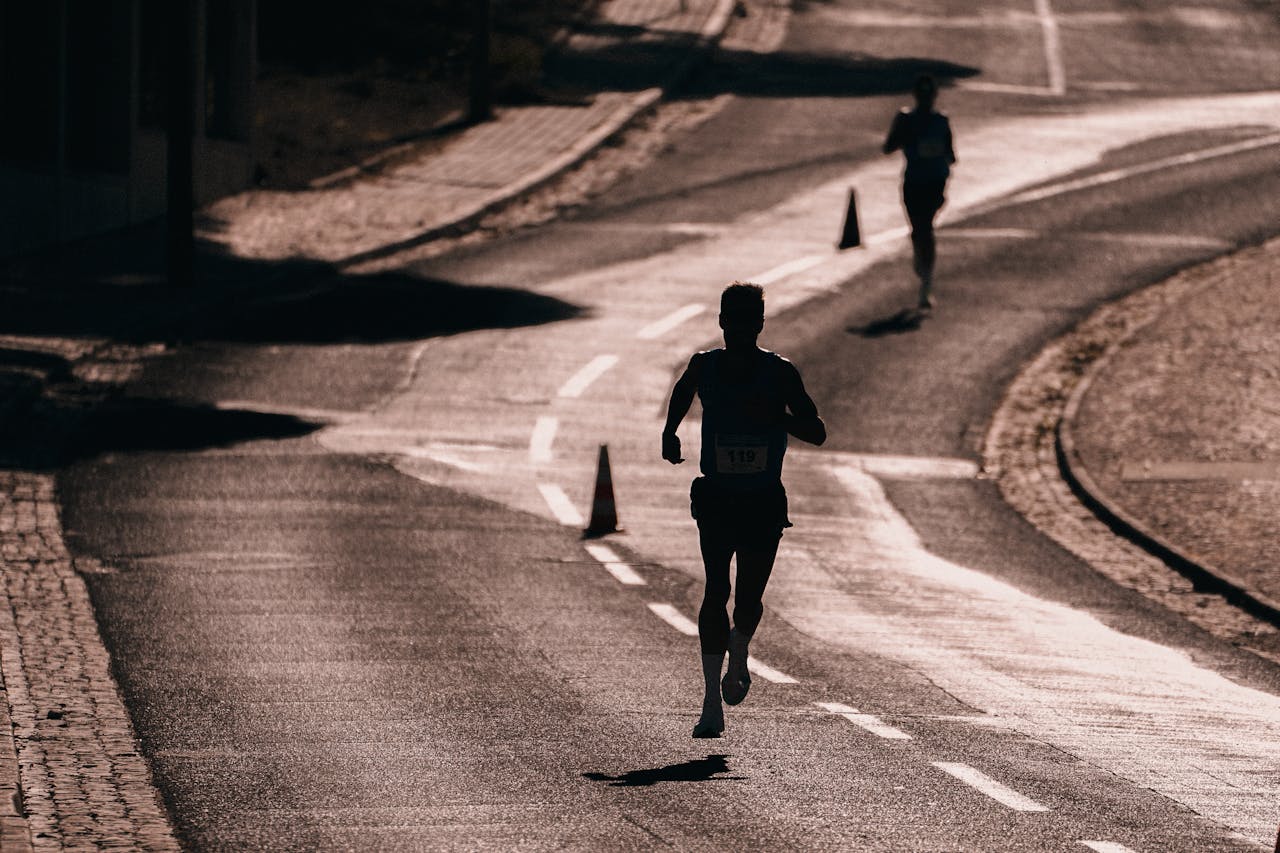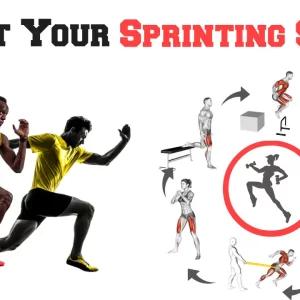Contents
- Testosterone: The Key Link Between Endurance and Libido
- How Endurance Exercise Affects Male Libido
- Endurance Training and Low Libido: Why Does This Happen?
- Not All Exercise Is Bad for Libido
- How to Train Smarter and Protect Sexual Health
- Takeaway: Exercise for Performance, Not at the Expense of Libido
- Sources and Further Reading
Exercise is widely known to support heart health, boost mood, and enhance confidence. But what if too much of it—especially endurance training like marathon running or cycling—starts to interfere with your sex drive?
Surprisingly, recent research shows that chronic, high-volume endurance exercise may reduce libido in men. The growing body of evidence, spearheaded by researchers like Dr. Anthony Hackney, suggests that chronic high-volume training is a risk factor for exercise-induced hypogonadism.
This article breaks down the science, what it means for athletes, and how to train smart without compromising your sexual health.
Testosterone: The Key Link Between Endurance and Libido
What Is Testosterone?
Testosterone is a primary androgenic hormone produced in the testes (men), ovaries (women), and adrenal glands.
Testosterone functions include:
- Regulating libido and sexual function
- Stimulating muscle protein synthesis
- Supporting bone mineral density
- Influencing mood, energy, and cognitive function
- Governing spermatogenesis (sperm production)
Resting Testosterone:
“Resting testosterone” refers to the hormone level measured in a calm, non-stimulated state. It’s typically drawn early in the morning (7:00–10:00 AM) after 8+ hours of fasting, with no recent exercise, alcohol, or sexual activity. This is when levels naturally peak due to diurnal rhythms.
Clinical Testosterone Ranges (Men)
| Age Group | Total Testosterone Range |
|---|---|
| 19–39 years | 300–1000 ng/dL (10.4–34.7 nmol/L) |
| 40+ years | Decline of ~1% per year is common |
How Endurance Exercise Affects Male Libido
Dr. Anthony Hackney and colleagues conducted one of the first large-scale studies to investigate how endurance exercise training affects male libido.
Study Summary:
- Participants: 1,077 healthy, physically active men
- Method: Online survey assessing training habits, exercise duration, intensity, and sexual libido
Key Findings
- Men with higher training intensity and longer weekly duration were significantly more likely to report low libido.
- Those with low to moderate training intensity had 2.8–6.9 times greater odds of reporting healthy libido compared to those with the most intense routines.
- Similarly, shorter and moderate-duration athletes reported better libido scores than those training for the longest periods.
Conclusion: “Exposure to higher levels of chronic intense and greater durations of endurance training on a regular basis is significantly associated with decreased libido scores in men.” — Hackney et al., 2017
Testosterone Trends in Long-Term Endurance Athletes
To understand the magnitude of testosterone suppression, researchers evaluated data from 196 endurance-trained male runners and matched non-exercising controls. Key study parameters included:
- Competitive running of ≥10 km.
- Training ≥7+ hours per week for at least 1 year.
- Matched controls by age, BMI, and ethnicity.
- Resting total testosterone measured in the morning after fasting and rest.
Testosterone levels were reported as a percentage relative to the control subject, then stratified by training duration: 1, 2, 5, 10, and 15+ years.
Findings: The Longer the Training, the Lower the Testosterone
It turns out that there is a significant drop in testosterone as the years of endurance training increase:
| Years of Training | Testosterone vs. Control |
|---|---|
| 1 Year | Slightly Reduced |
| 2 Years | Moderately Reduced |
| 5+ Years | ~30% Reduction (p < 0.01) |
| 10–15+ Years | Plateau at ~30% |
This suggests a threshold effect after 5 years, where testosterone stabilizes at a chronically low level regardless of further endurance exposure.
Endurance Training and Low Libido: Why Does This Happen?
1. Testosterone Suppression from Overtraining
Intense, prolonged endurance training is known to suppress testosterone production. Chronic exercise stress triggers a hormonal shift—increasing cortisol (a stress hormone) while reducing reproductive hormones like testosterone.
Consequences include:
- Decreased libido and sexual performance
- Erectile dysfunction
- Mood disturbances, irritability, and depressive symptoms
- Impaired recovery and muscle loss
2. Energy Deficiency and RED-S
Endurance athletes often enter a state called Relative Energy Deficiency in Sport (RED-S)—where the energy demands of training exceed food intake.
In Male Athletes, RED-S May Result In:
- Low testosterone and low LH/GnRH levels
- Decreased sperm production and libido
- Increased fatigue and impaired training adaptation
- Higher injury risk (e.g., stress fractures, immune suppression)
RED-S isn’t just about calorie intake—it’s about not having enough fuel left over after exercise to support normal body functions, including sexual function.
Not All Exercise Is Bad for Libido
It’s important to clarify: moderate exercise supports healthy libido.
Benefits of balanced physical activity include:
- Improved blood flow (essential for erectile function)
- Reduced stress and anxiety
- Higher confidence and body image
- Healthy testosterone regulation
It’s chronic overtraining—particularly in endurance athletes—that poses the risk.
How to Train Smarter and Protect Sexual Health
1. Periodize Your Training Cycle
Avoid training at maximum intensity and volume every week. Implement deload weeks every 4–6 weeks to reduce total training load by 40–60%.
- Use polarized training: 80% low-moderate, 20% high-intensity
- Integrate recovery microcycles to reduce sympathetic stress
2. Prioritize Sleep and Circadian Hygiene
Poor sleep decreases testosterone secretion and disrupts the HPG axis. Aim for:
- 7–9 hours per night
- Consistent sleep-wake times
- Reduction of blue light before bed
Sleep deprivation can reduce testosterone by 10–15% in just one week (Leproult & Van Cauter, 2011).
3. Eat Enough to Fuel Training and Recovery
Use tools like:
- Energy Availability (EA) equation = (Energy intake – Exercise energy expenditure) / FFM
- Maintain EA ≥ 45 kcal/kg FFM/day for hormonal balance
- Include sufficient carbs and fats for hormone production
4. Listen to the Warning Signs
Common indicators of overtraining or RED-S impacting sexual health include:
- Loss of spontaneous or morning erections
- Sudden drop in libido or sex drive
- Persistent fatigue or irritability
- Difficulty sleeping or recovering
- Decline in strength or endurance despite training
Action Step: If symptoms persist, seek a sports endocrinologist or a provider familiar with RED-S.
Takeaway: Exercise for Performance, Not at the Expense of Libido
Moderate endurance training improves sexual health, but too much intensity and duration can harm it. As the research shows, men with the most demanding endurance routines were most likely to experience low libido.
The key is balance—train hard, recover well, eat enough, and keep an eye on how your body (and libido) responds. If you’re an endurance athlete noticing changes in sexual function, it might be time to reassess your training load and recovery practices.
Sources and Further Reading
- Hackney, A.C., Lane, A.R., Register-Mihalik, J., & O’Leary, C.B. (2017). Endurance Exercise Training and Male Sexual Libido. Med Sci Sports Exerc, 49(2):317–323.
- Hackney, A.C. The Male Reproductive System and Endurance Exercise. Med Sci Sports Exerc, 40(8), 1385–1389.
- Hackney, A.C., & Lane, A.R. (2018). Low testosterone in male endurance-trained distance runners: Impact of years in training. Hormones, 17(1), 137–139. PubMed ID: 29858867 doi:10.1007/s42000-018-0010-z. Search Google Scholar



